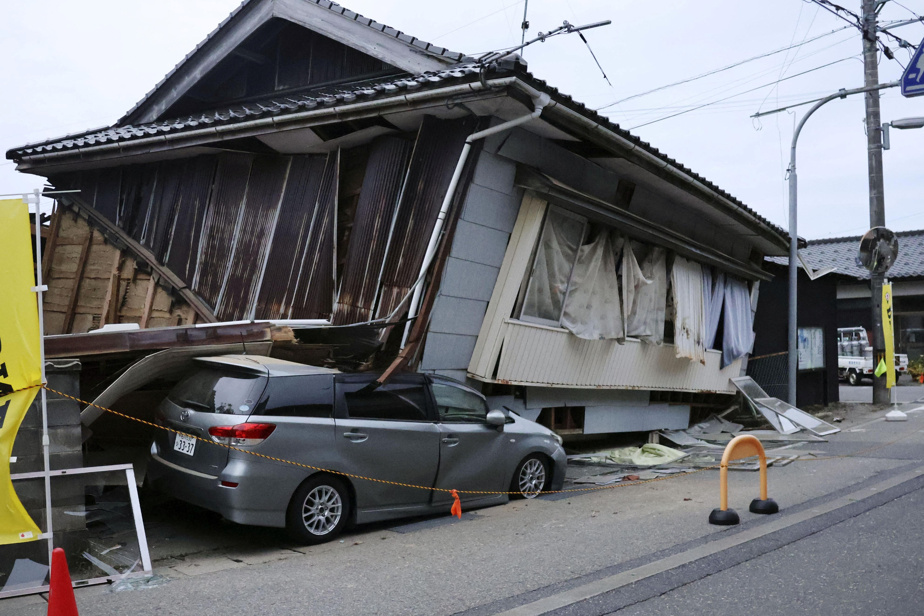(Tokyo) Authorities are assessing damage on Saturday the day after a powerful earthquake left one dead and 23 injured in central Japan and was followed by more than 50 aftershocks.
The magnitude 6.5 earthquake occurred at 2:42 p.m. (1:42 a.m. EST) in Ishikawa Prefecture, according to the Japan Meteorological Agency (JMA). She initially estimated the magnitude at 6.3.
By Saturday morning, at least 55 aftershocks had been recorded since the initial tremor, according to the same source, which further warned of the risk of landslides in the area.
At least 23 people were injured, the national crisis management agency said in a statement on Saturday.
“Our staff are assessing the damage from the earthquake,” an official from the hardest-hit city of Suzu in Ishikawa Prefecture told AFP.
Two people trapped in a destroyed building have been rescued, he added, and about fifty people have been given emergency accommodation in schools and the town hall.
On Friday, Japanese government spokesman Hirokazu Matsuno told the media of a death toll, adding that the collapse of several buildings had been reported.
The victim died after falling from a ladder in Suzu, on the Sea of Japan coast, according to a crisis management official there.
NHK footage showed destroyed or damaged wooden houses, with shattered windows and battered roofs. You could also see a sagging mountain section.
The earthquake reached level 6 in places on the Japanese Shindo scale, which has 7.
The American institute of geological studies USGS for its part estimated the magnitude of the earthquake at 6.2 and located it slightly off the coast, while the Japanese agency placed the epicenter on dry land.
Earthquakes are common in Japan, which sits on the Pacific “Ring of Fire,” an area of high seismic activity that stretches across Southeast Asia and the Pacific Basin.
The archipelago has strict construction standards so that its buildings are able to withstand strong tremors. Emergency exercises to prepare for a major earthquake are regularly organized.
The city of Suzu is on the Noto Peninsula, hit by a 6.9 magnitude earthquake in 2007 that injured hundreds and damaged more than 200 buildings.
Japan remains haunted by the memory of the magnitude 9.0 earthquake of March 11, 2011, off the northeast coast of Japan.
The terrible tremor had resulted in a tsunami which was the main cause of the heavy human toll of nearly 18,500 dead or missing.
The ensuing nuclear accident at the flood-ridden Fukushima Daiichi plant, where the cores of three of six reactors melted, forced tens of thousands of people to evacuate and rendered entire communities uninhabitable for several years.

